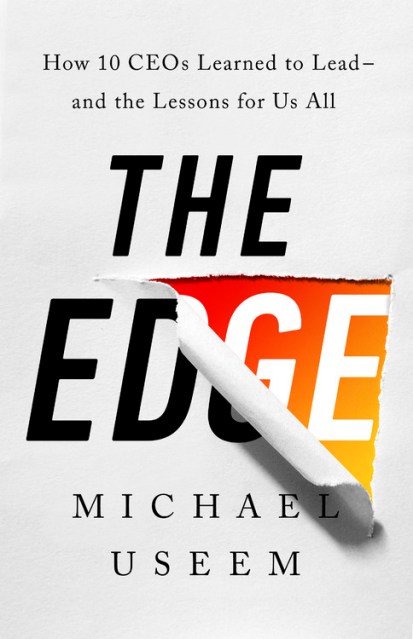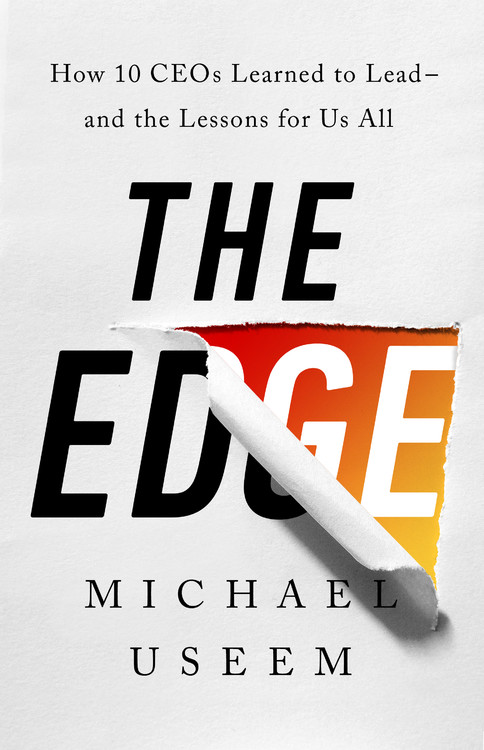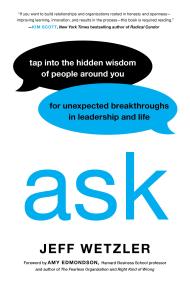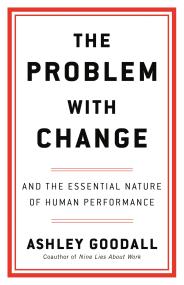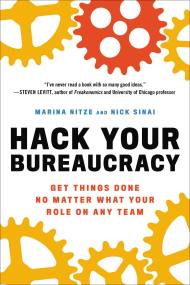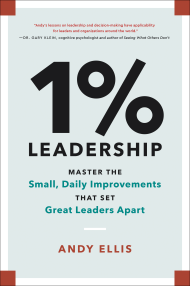Promotion
Use code MOM24 for 20% off site wide + free shipping over $45
The Edge
How Ten CEOs Learned to Lead--And the Lessons for Us All
Contributors
Formats and Prices
Price
$28.00Price
$35.00 CADFormat
Format:
- Hardcover $28.00 $35.00 CAD
- ebook $17.99 $22.99 CAD
- Audiobook Download (Unabridged) $24.99
This item is a preorder. Your payment method will be charged immediately, and the product is expected to ship on or around June 22, 2021. This date is subject to change due to shipping delays beyond our control.
Also available from:
A leader’s job—in a radically changing world—is standing on the cliff edge, getting a grip on unfamiliar landscapes, and acquiring the skills for leading the enterprise into new territory. In a world facing the unprecedented challenges of global pandemic and economic distruption, every leader needs to find the edge for leaping across the breach and breaking new ground on the other side.
Michael Useem provides rare insight into how ten leaders confronted hard realities. He looked close-in at the lide and work of people such as Bill McNabb of Vanguard, Jeffrey Lurie of the Philadelphia Eagles, Alex Gorsky of Johnson & Johnson, and Tricia Griffith of Progressive Insurance. His “you are there” profiles chronicle fateful decisions such as:
- Meeting the concerns of a next-generation workforce that considers inclusiveness an integral part of business
- Developing a strategy for growth in a market that is cratering
- Escaping the confines of an insane, always-on, 24/7 world to learn about the real, granular changes happening in the marketplace
Useem’s profiles of leaders on the edge provide the inspiration and the guidance we all need for adapting and thriving in an era of massive disruption and continuous transformation.
Genre:
-
“Michael Useem stands as one of our seminal leadership observers. Generations of students and executives have been shaped into better leaders through his teaching. He is one of those rare professors who blends academic rigor with practical guidance and who has a gift for bringing ideas to life with vivid analogies from history and adventure. His accumulated years of perspective make him one of the wise men among us.”Jim Collins, author of Good to Great, How the Mighty Fall, and Turning the Flywheel
-
“Developing the skills required to grapple with ever escalating demands—whilst simultaneously doubling down on the traditional but still crucial skills of strategic vision and operational excellence—requires going to the very edge of modern practice. In this engaging and eminently practical book, Mike Useem takes us into the intimate stories of an extraordinarily diverse group of business leaders. Moving beyond platitudes and easy generalization, The Edge shows us what post pandemic leadership looks like on the ground for leaders everywhere.”Rebecca M. Henderson, university professor, Harvard Business School, and author of Reimagining Capitalism in a World on Fire
-
“Michael Useem extracts an array of compelling lessons from the tangible experiences of ten executives who learned to lead in a new era without letting go of what had worked for them before. The Edge provides the roadmap for drawing on the past while mastering the future.”Ram Charan, author of Execution and Rethinking Competitive Advantage
-
“In a vivid look at how CEOs have led their enterprises through thick and thin, The Edge presents actionable guidance on how to lead with both enduring principles and emerging precepts, including a learning tour, a flywheel for growth, and a partner at the top. For becoming a complete leader in the years ahead, this is the book to absorb.”Indra Nooyi, former chair and chief executive of PepsiCo, Inc., and director of Amazon and the International Cricket Council
-
“For most CEOs today, one of the most important questions they must answer is how to maintain a competitive edge in turbulent waters. Drawing upon the experiences and lessons of ten major CEOs, Michael Useem once again delivers the goods—fast paced, no-nonsense, penetrating views. One of the nation’s best authorities on leadership. Useem is a man with an edge all his own.”David Gergen, cofounding director, Center for Public Leadership, Harvard Kennedy School of Government
-
“Wharton’s Michael Useem draws on the close-in experience of ten CEOs to help us all understand not only what is still true for leading an enterprise but also what is new as customer markets and security measures transform around us. The Edge offers the essential guide for leading in an ever-changing and more uncertain world.”Rob Katz, CEO, Vail Resorts, Inc.
-
“The Edge needs to be read by global leaders and those who aspire to be global leaders. The themes that bind these ten individuals together of over-communication, over-collaboration, and over-commitment to employees, customers, partners, and the underserved are the keys to future enlightened world economic success.”Stephen K. Klasko, president & CEO, Thomas Jefferson University and Jefferson Health, and distinguished fellow, World Economic Forum
-
“Michael Useem’s The Edge offers gripping accounts of how company executives lead their firms through challenging times, updating the best leadership principles of the past, and providing a tangible playbook for steering your enterprise into the future.”Ron Williams, former chief executive, Aetna, chief executive of RW2 Enterprises, and author of Learning to Lead
- On Sale
- Jun 22, 2021
- Page Count
- 288 pages
- Publisher
- PublicAffairs
- ISBN-13
- 9781541774117
Newsletter Signup
By clicking ‘Sign Up,’ I acknowledge that I have read and agree to Hachette Book Group’s Privacy Policy and Terms of Use
